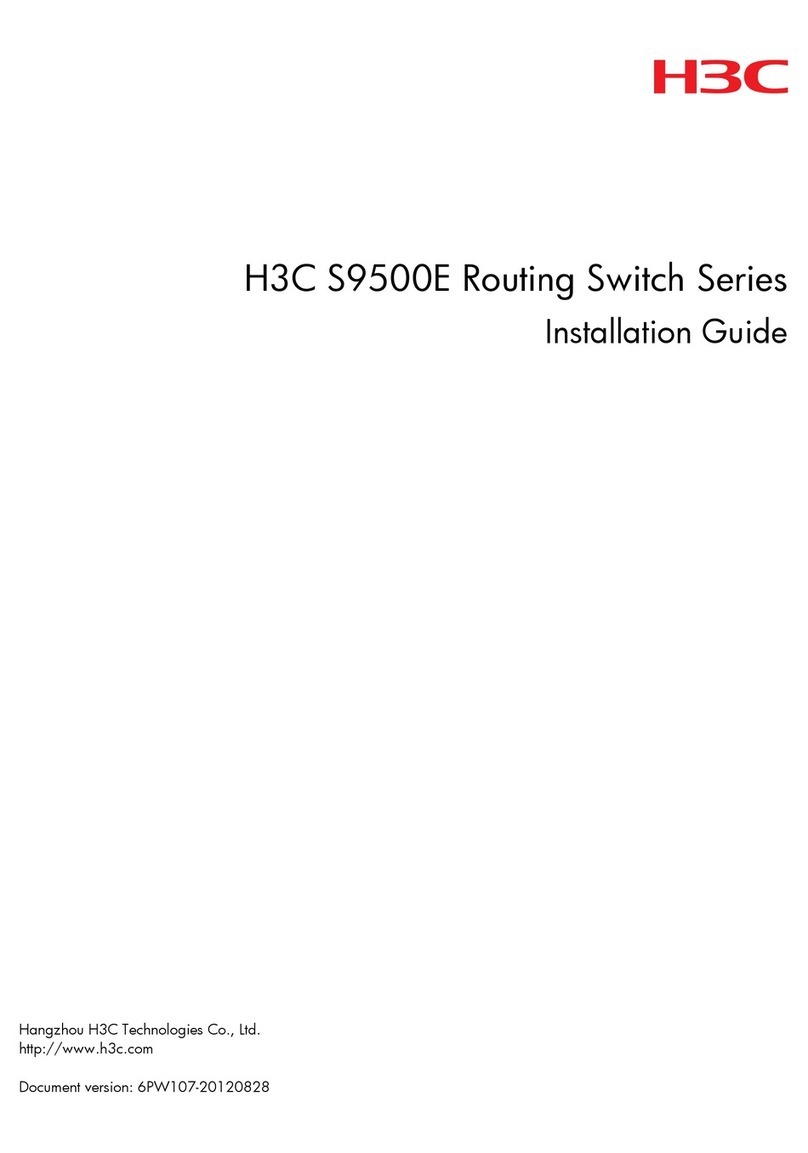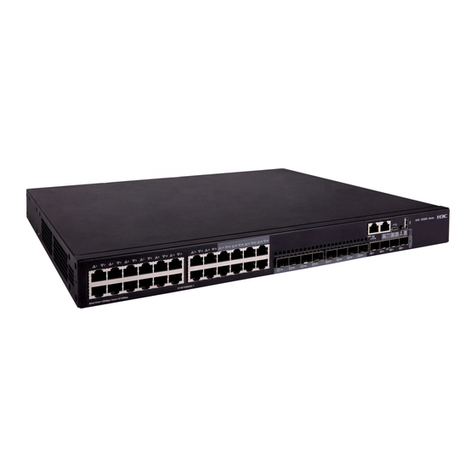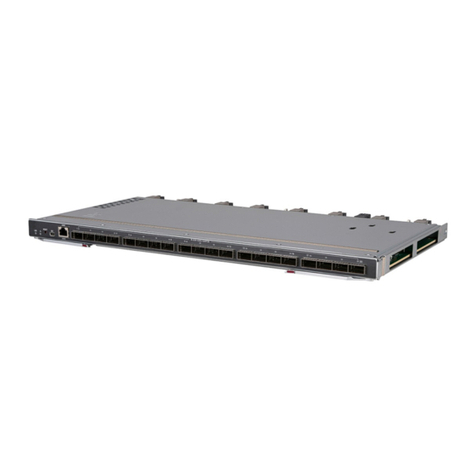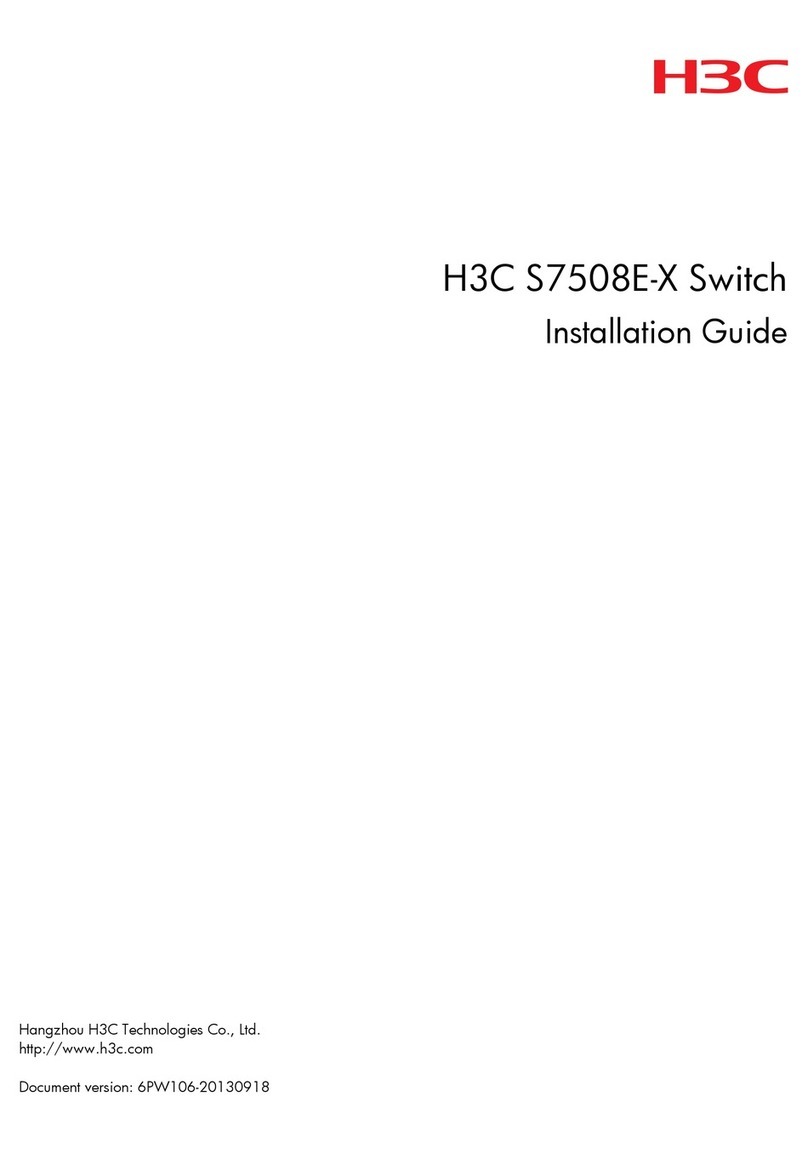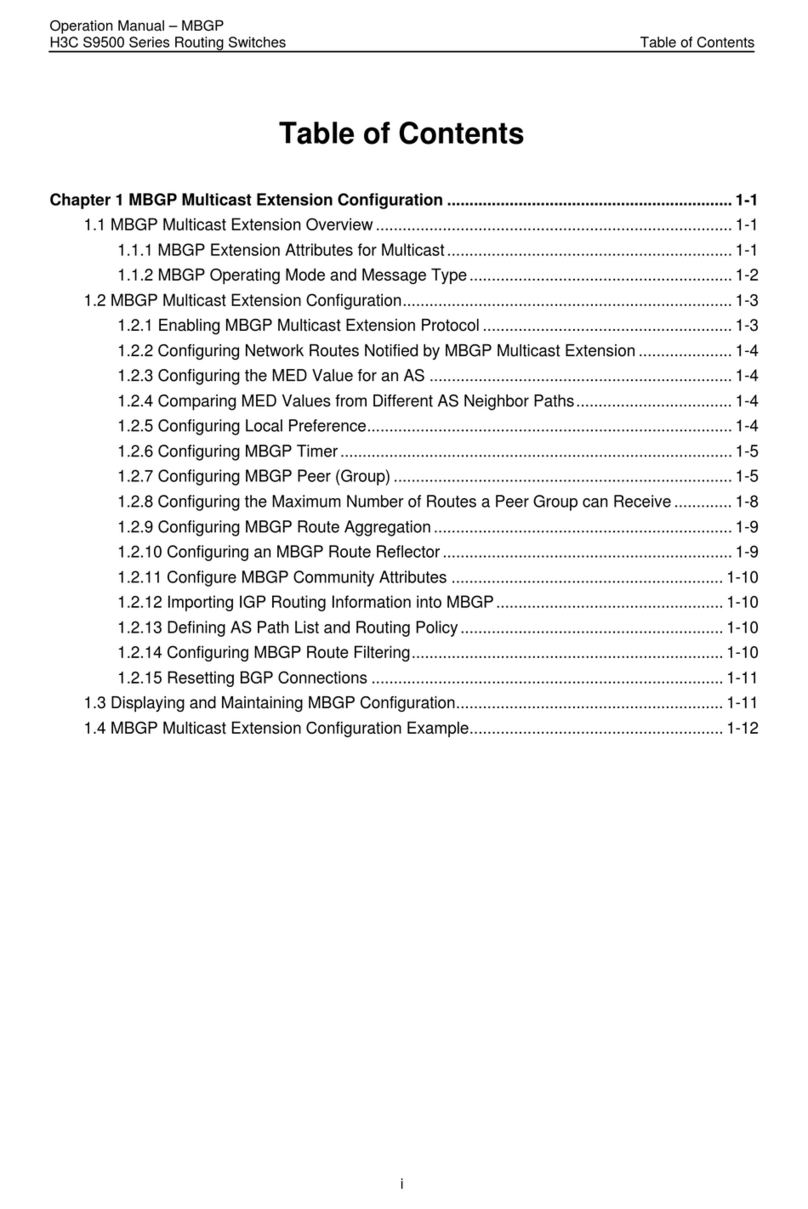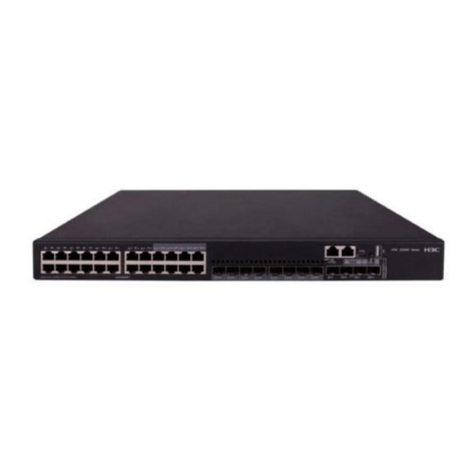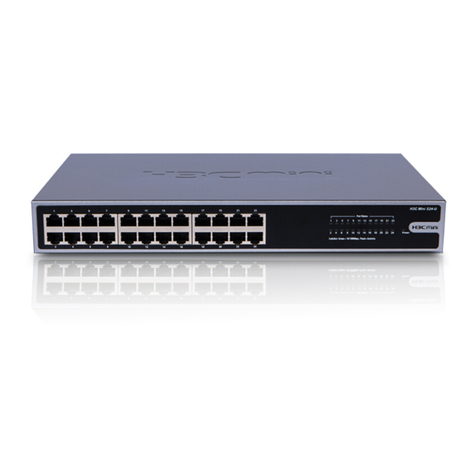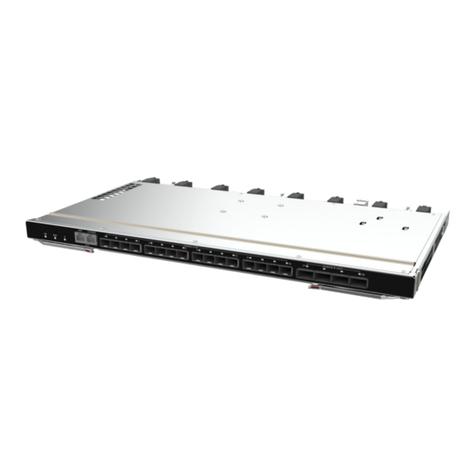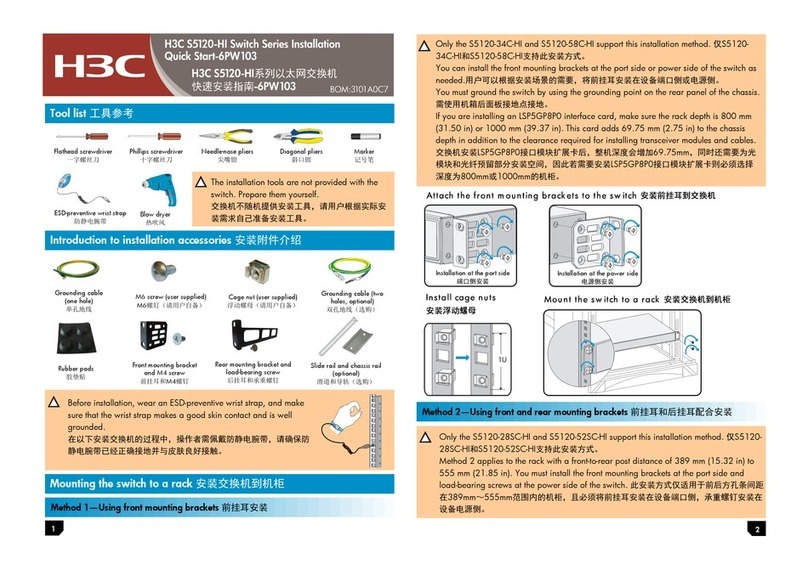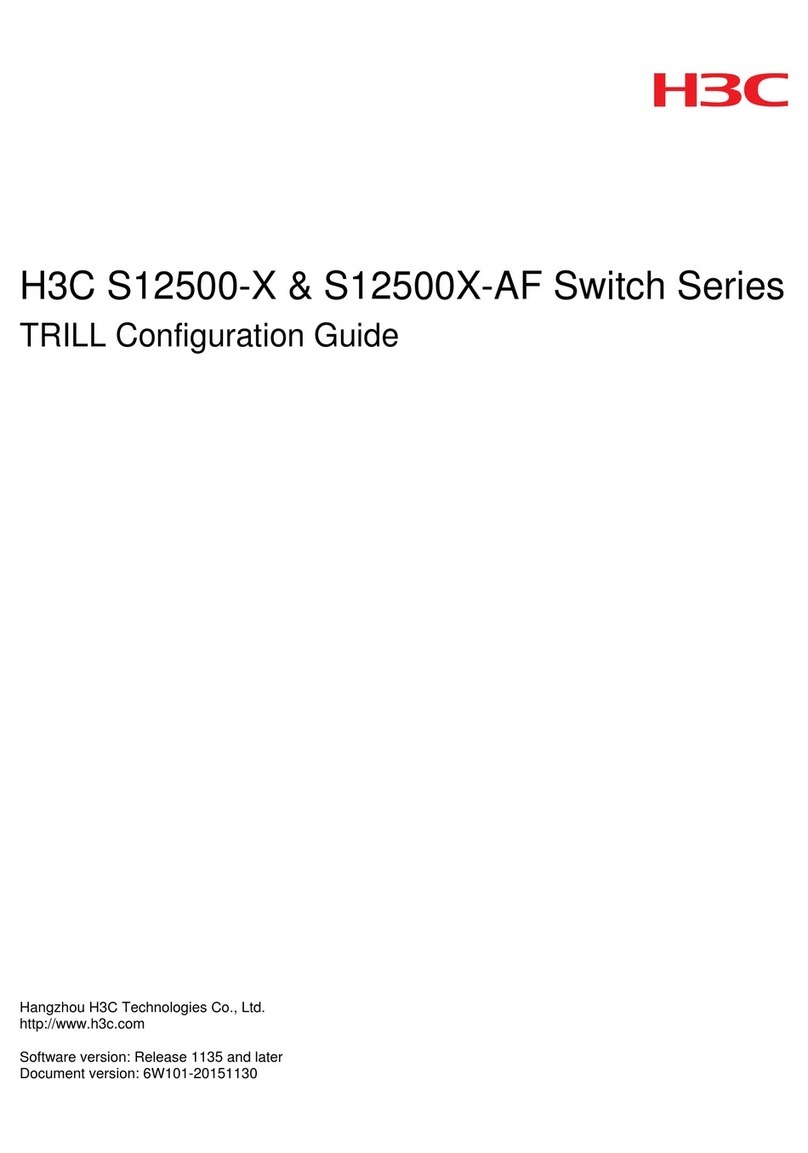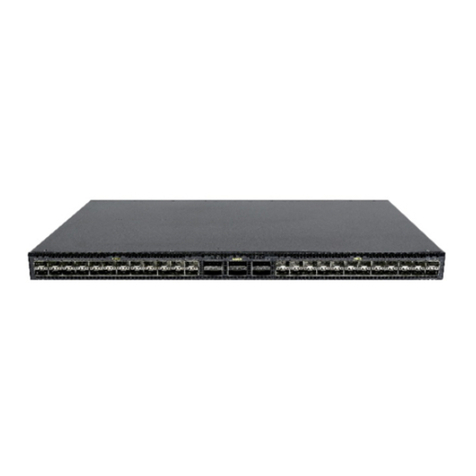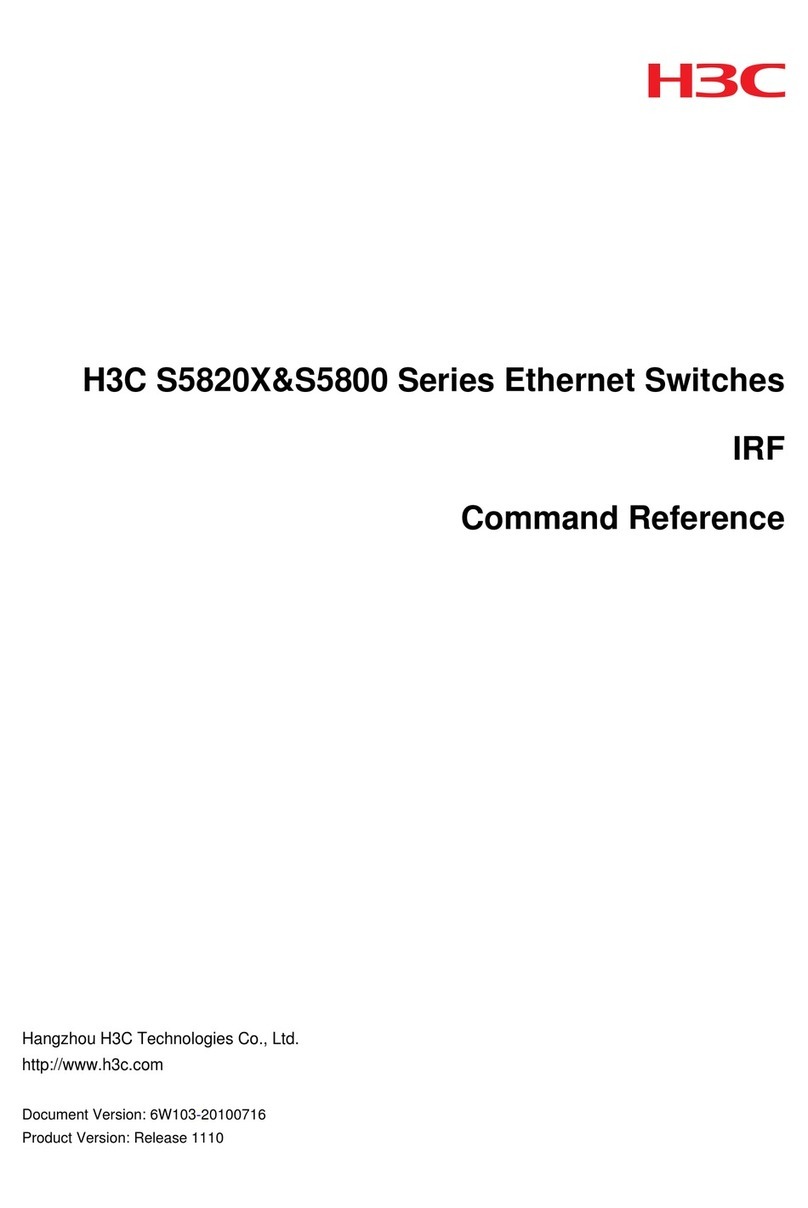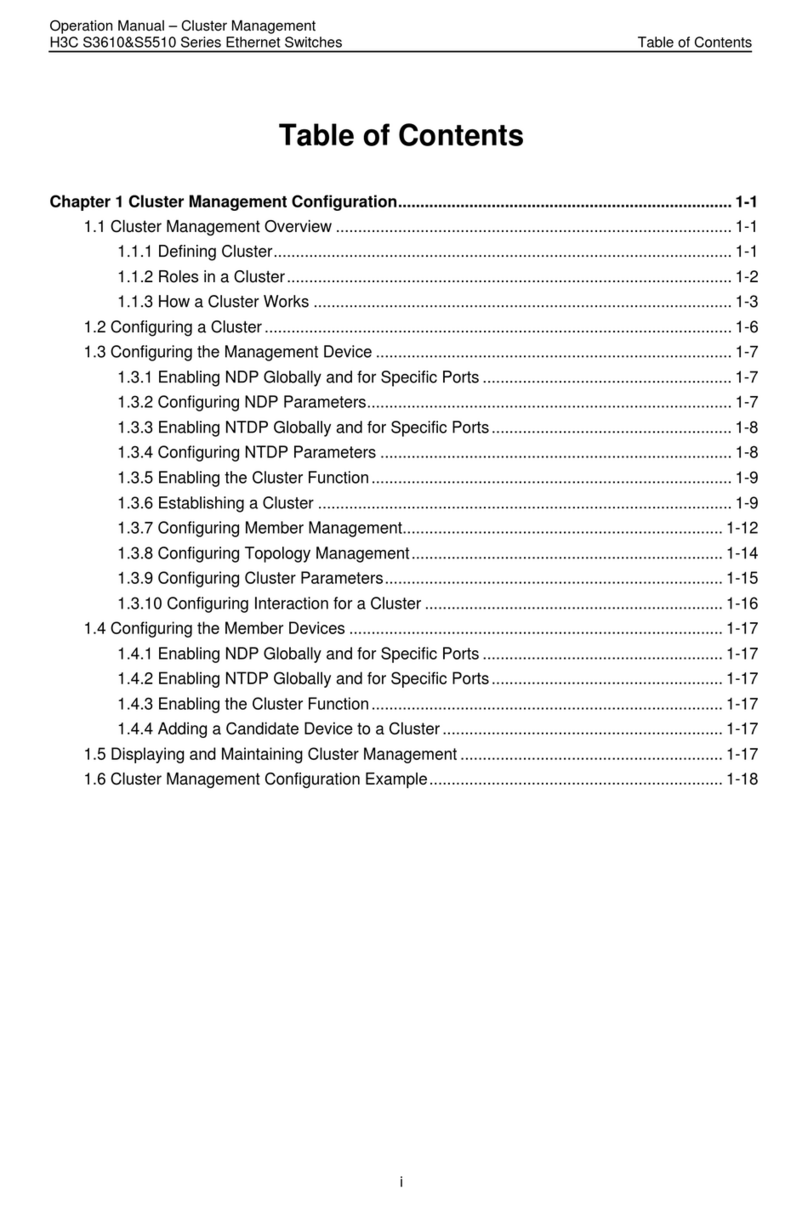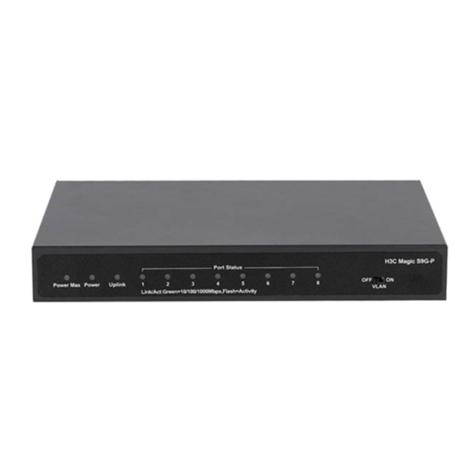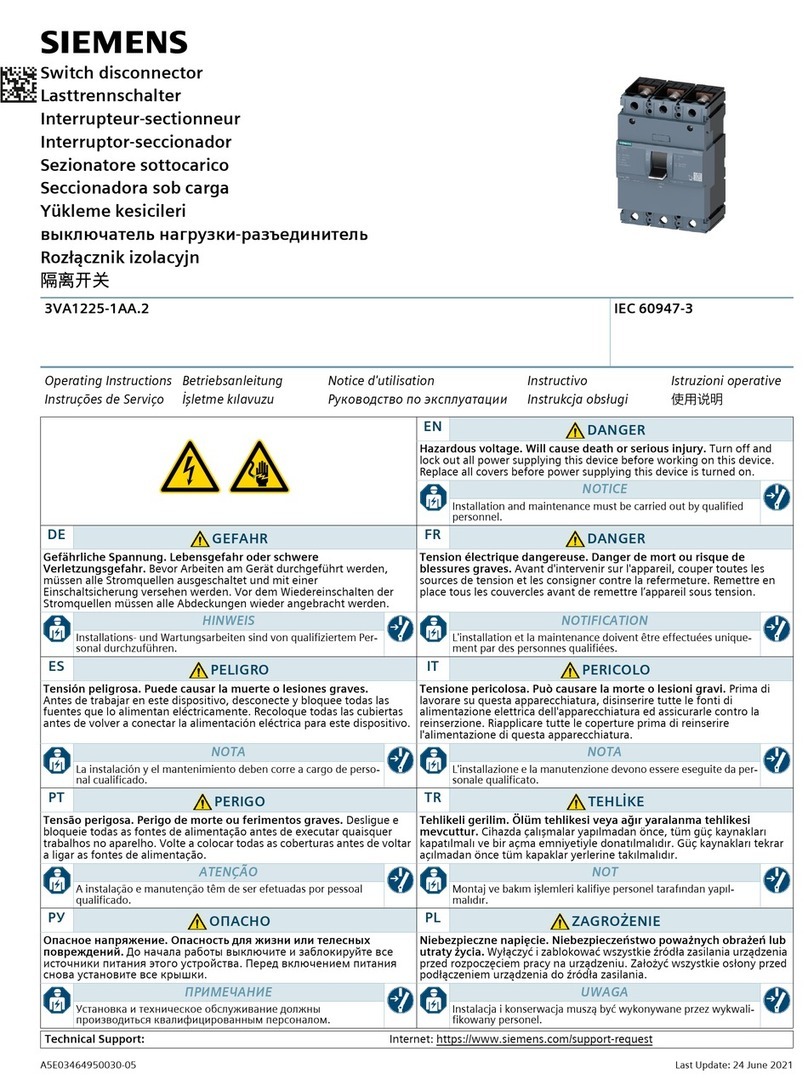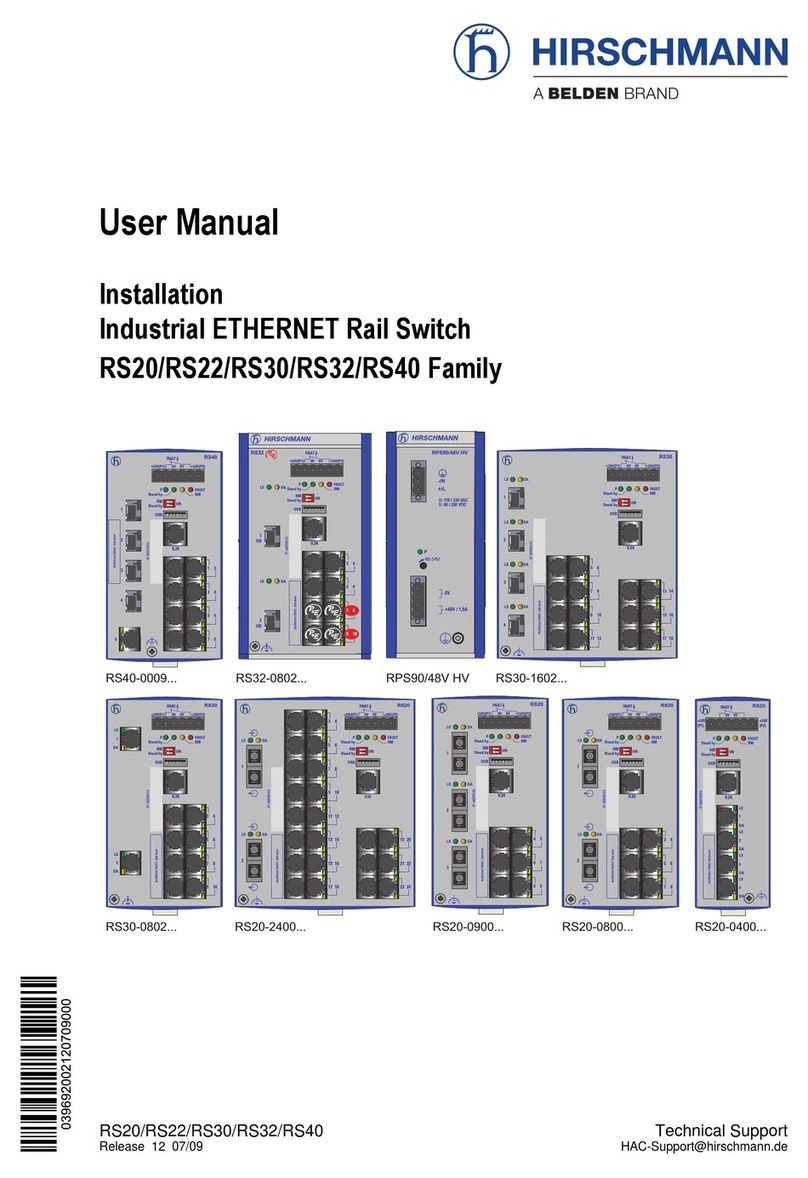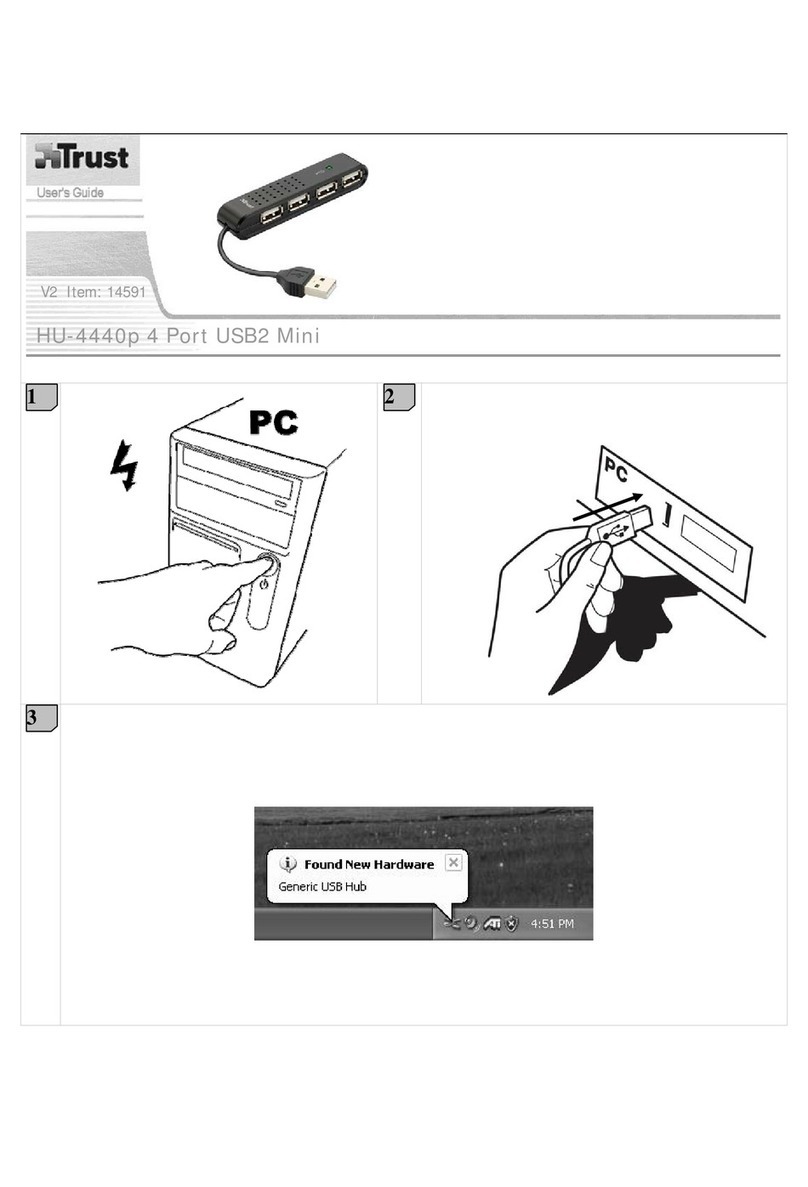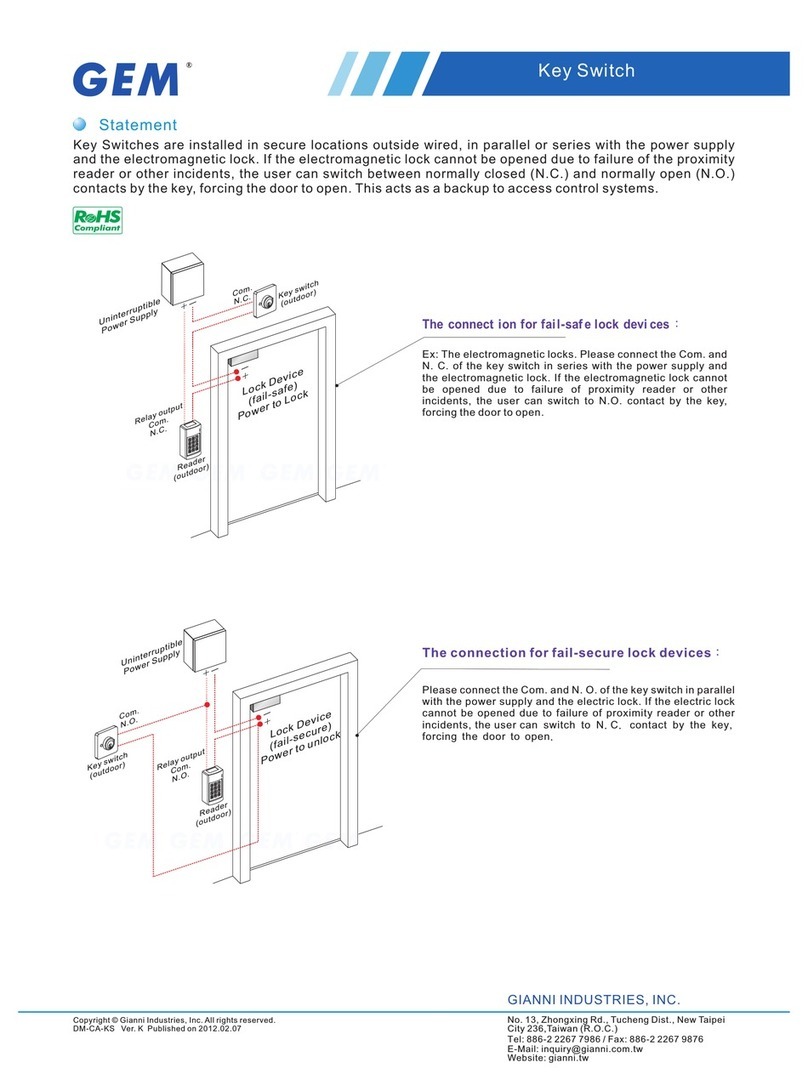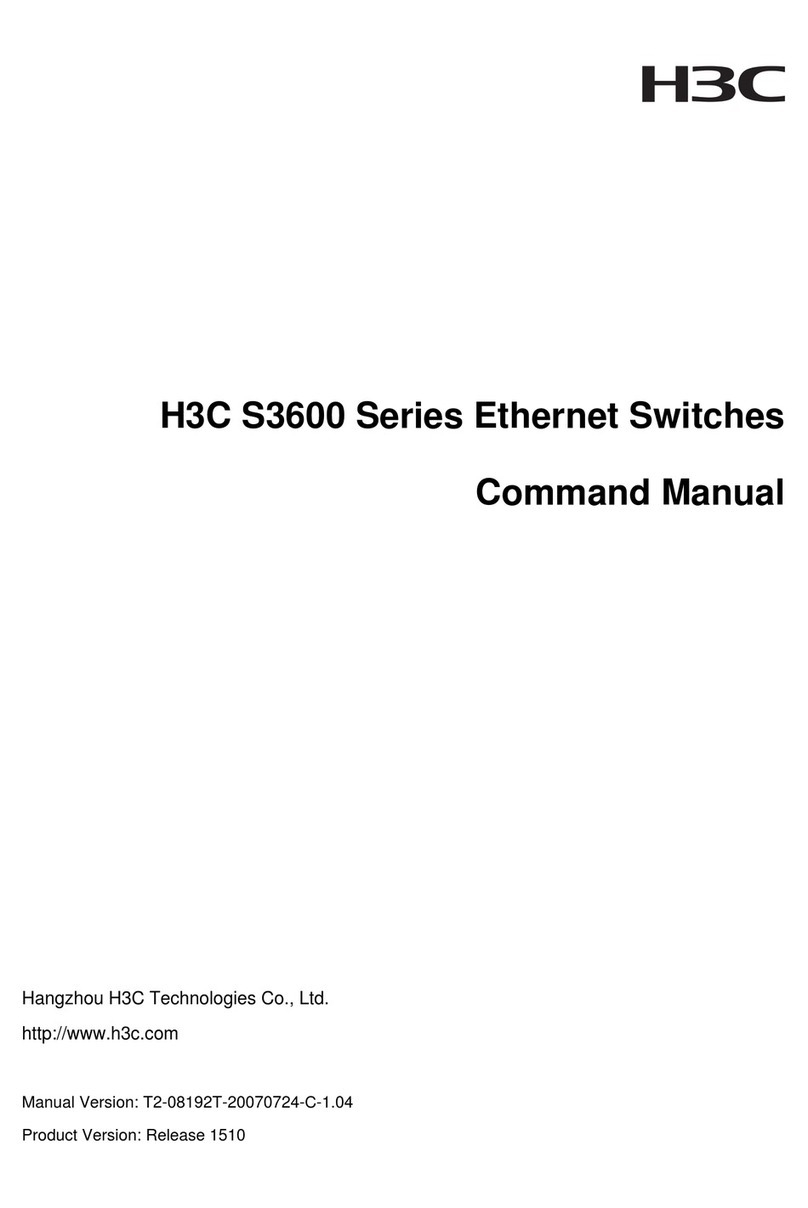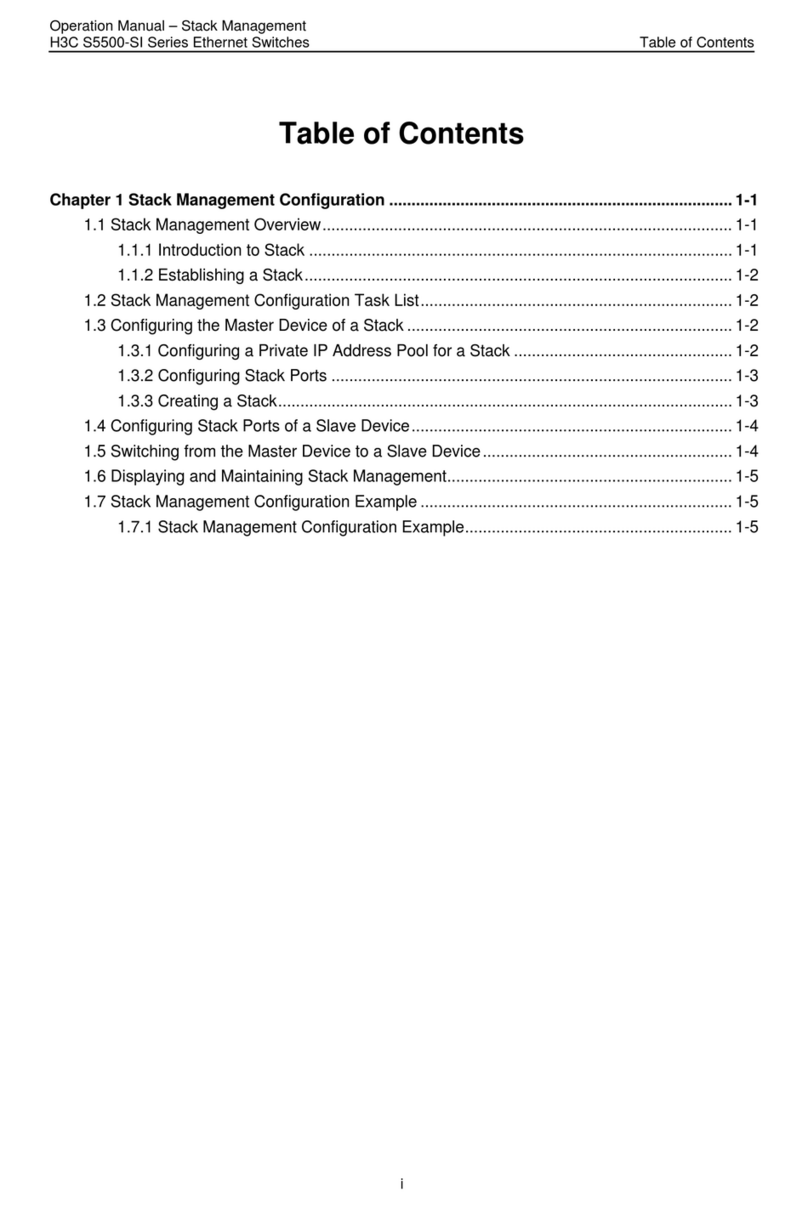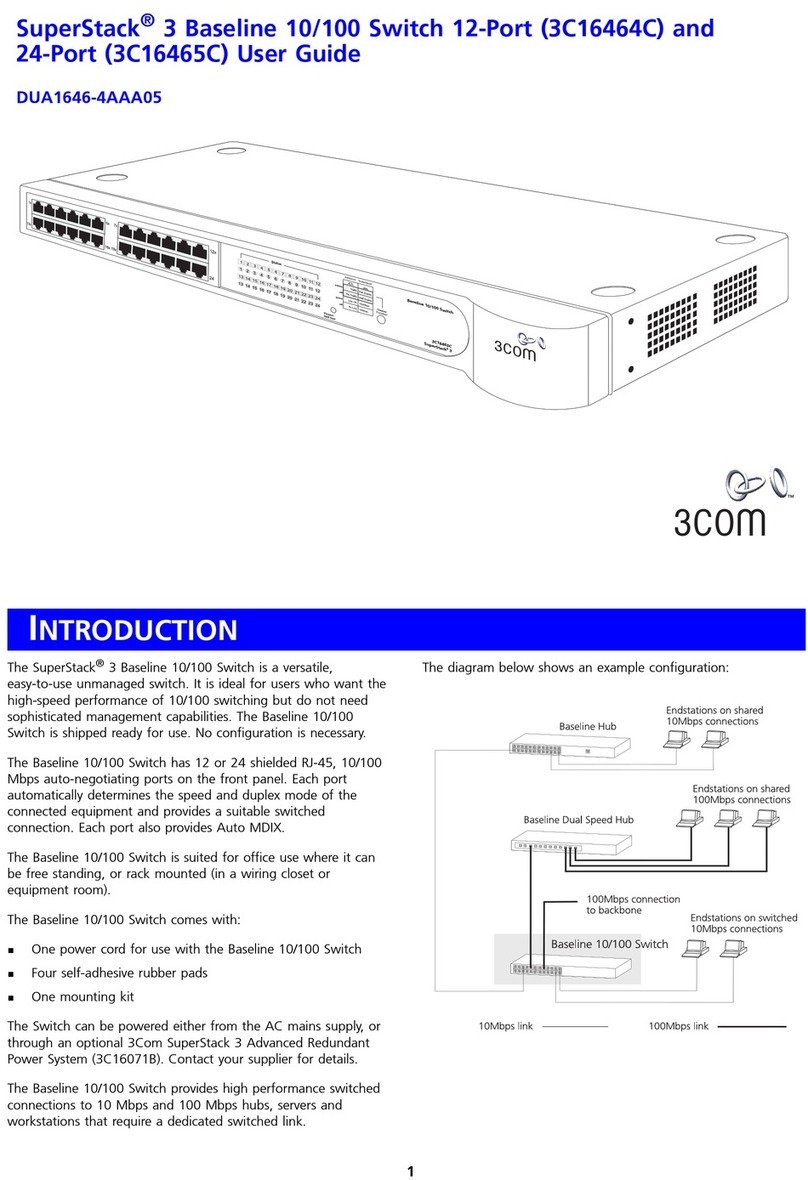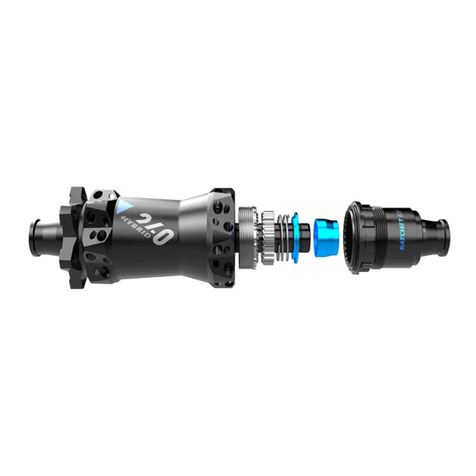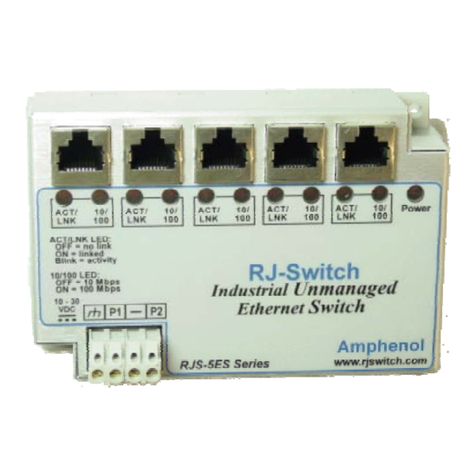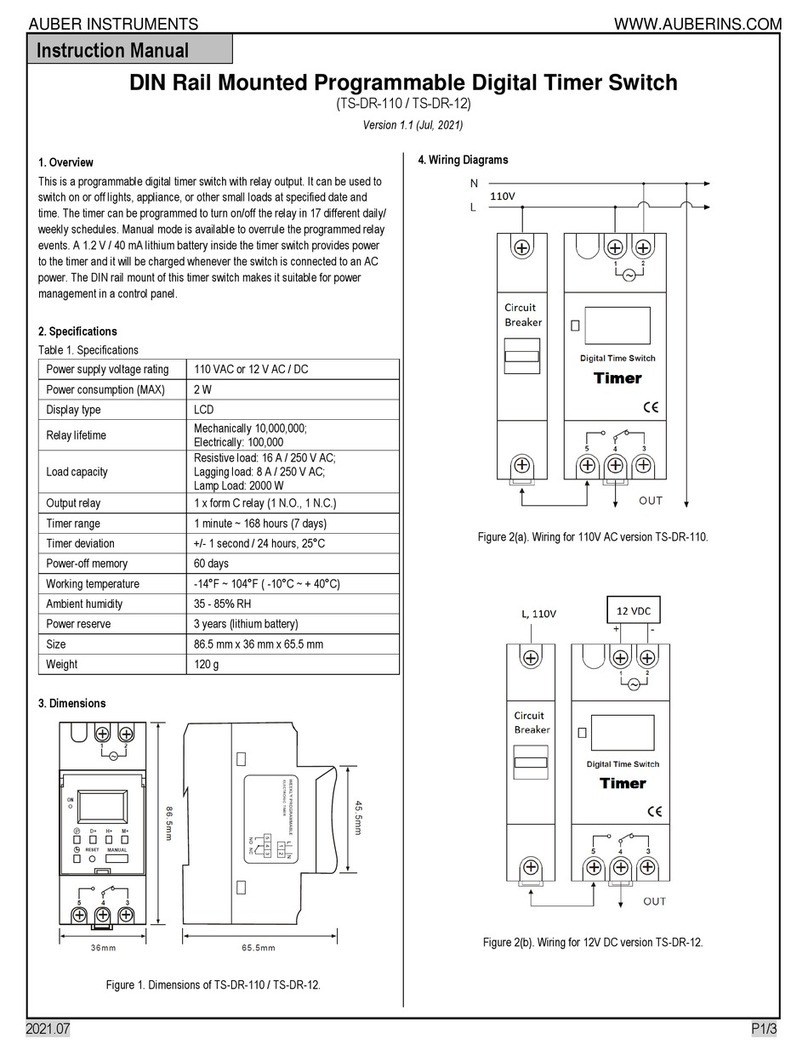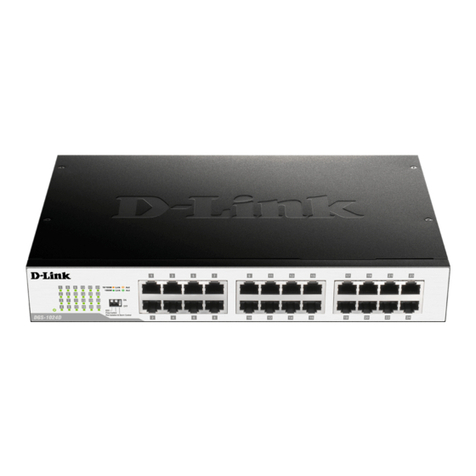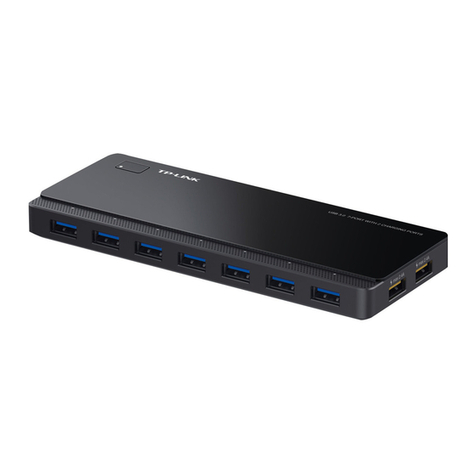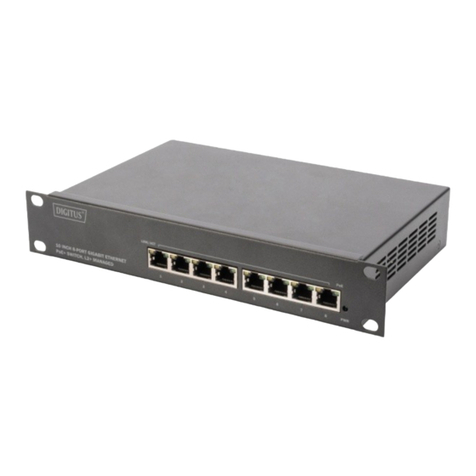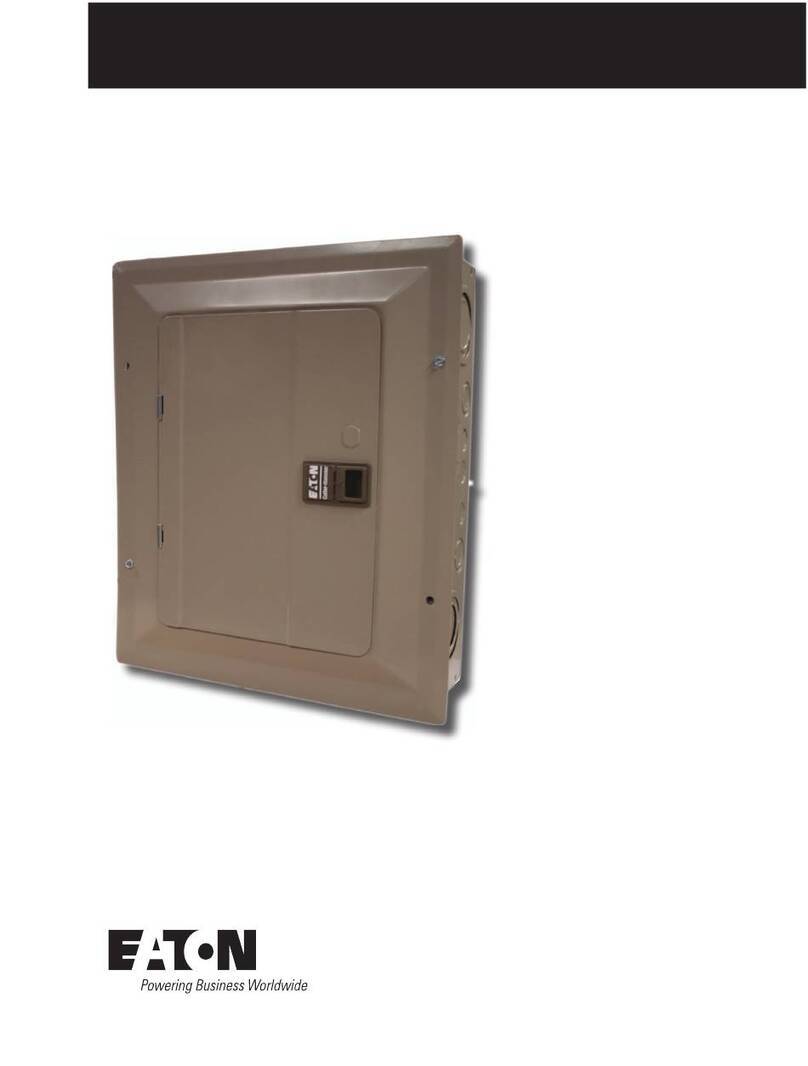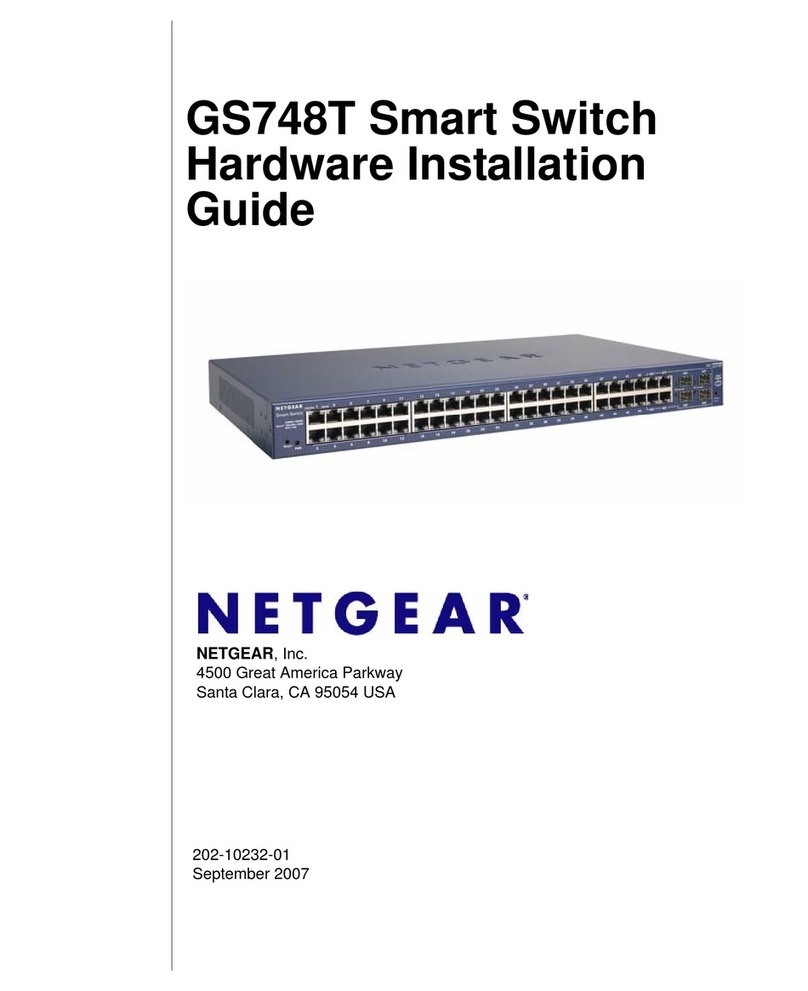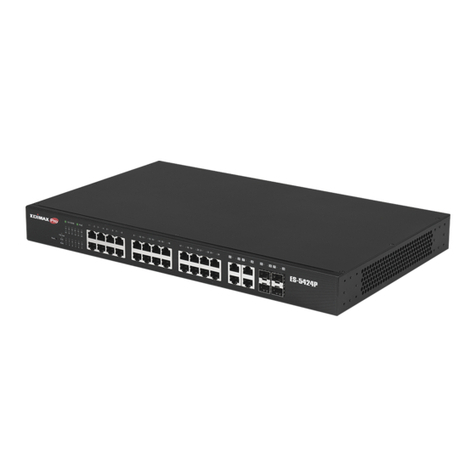
Operation Manual – IPv6 Multicast Routing and Forwarding
H3C S9500 Series Routing Switches Chapter 1 IPv6 Multicast Routing and
Forwarding Configuration
1-2
and forwarding policy and installs the route entry into its IPv6 multicast forwarding
table.
1.1.2 RPF Mechanism
When creating IPv6 multicast routing table entries, an IPv6 multicast routing protocol
uses the reverse path forwarding (RPF) to ensure IPv6 multicast data delivery along
the correct path.
The RPF mechanism enables routers to correctly forward IPv6 multicast packetsbased
on the multicast route configuration. In addition, the RPF mechanism also helps avoid
data loops caused by various reasons.
I. Implementation of the RPF mechanism
Upon receiving an IPv6 multicast packet sent from a multicast source S to an IPv6
multicast group G, the device first searches its IPv6 multicast forwarding table:
1) If the corresponding (S, G) entry exists, and the interface on which the packet
actually arrived is the incoming interface in the IPv6 multicast forwarding table, the
device forwards the packet to all the outgoing interfaces.
2) If the corresponding (S, G) entry exists, but the interface on which the packet
actually arrived is not the incoming interface in the IPv6 multicast forwarding table,
the packet is subject to an RPF check.
zIf the result of the RPF check shows that the RPF interface is the incoming
interface of the existing (S, G) entry, this means that the (S, G) entry is correct but
the packet arrived from a wrong path and is to be discarded.
zIf the result of the RPF check shows that the RPF interface is not the incoming
interface of the existing (S, G) entry, this means that the (S, G) entry is no longer
valid. The device replaces the incoming interface of the (S, G) entry with the
interface on which the packet actually arrived and forwards the packet to all the
outgoing interfaces.
3) If no corresponding (S, G) entry exists in the multicast forwarding table, the packet
is also subject to an RPF check. The device creates an (S, G) entry based on the
relevant routing information and using the RPF interface as the incoming interface,
and installs the entry into the IPv6 multicast forwarding table.
zIf the interface on which the packet actually arrived is the RPF interface, the RPF
check is successful and the device forwards the packet to all the outgoing
interfaces.
zIf the interface on which the packet actually arrived is not the RPF interface, the
RPF check fails and the device discards the packet.
II. RPF Check
The basis for an RPF check is an IPv6 unicast route. The IPv6 unicast routing table
contains the shortest path to each destination subnet. An IPv6 multicast routing












